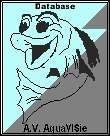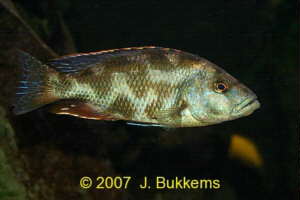 |
Nimbochromis livingstonii |
 |
||||||||||||||||||||||
|
|
|
|
||||||||||||||||||||||
| Explanation of the symbols | ||||||||||||||||||||||||
|
|
|
|||||||||||||||||||||||
|
||||||||||||||||||||||||
|
This predator is rather peaceful to species of their own
kind. You should keep one male together with several
females. The aquarium should be set up with rocks and
stones that form crevices and caves on the sides and
background. You should leave enough free swimming
space. You can use some plants such as Valliseria for
decoration as well. A territory is made. The
substrate should be sandy. You should not keep them
together with fishes that are too small, because they will
eat them. When the is hunting he will lay completely
on its side, pretending to be dead, and patiently waits for
small fish to come within range. Then, when it's ready, it
leaps up from the sand, devouring its prey. You should giver them live food such as small fish. Mosquito larvae, earthworms and beef heart are eaten as well. A part of the food should be vegetable such as lettuce and spinach. Breeding is easy. They are moutbreeders. At higher temperatures up to 100 eggs are incubated. |
||||||||||||||||||||||||
|
|
||||||||||||||||||||||||
|
Jan Bukkems |
||||||||||||||||||||||||
 |
||||||||||||||||||||||||
|
|
||||||||||||||||||||||||
